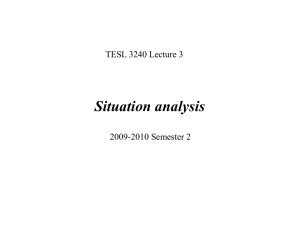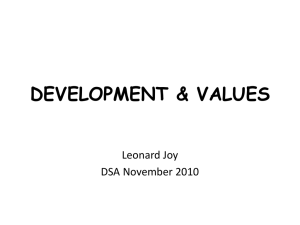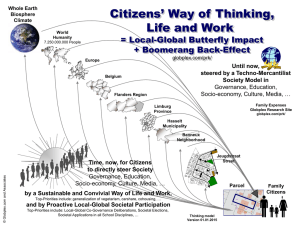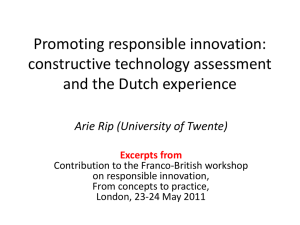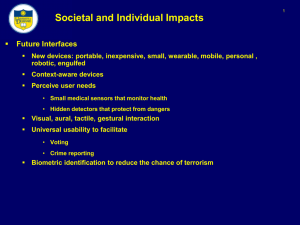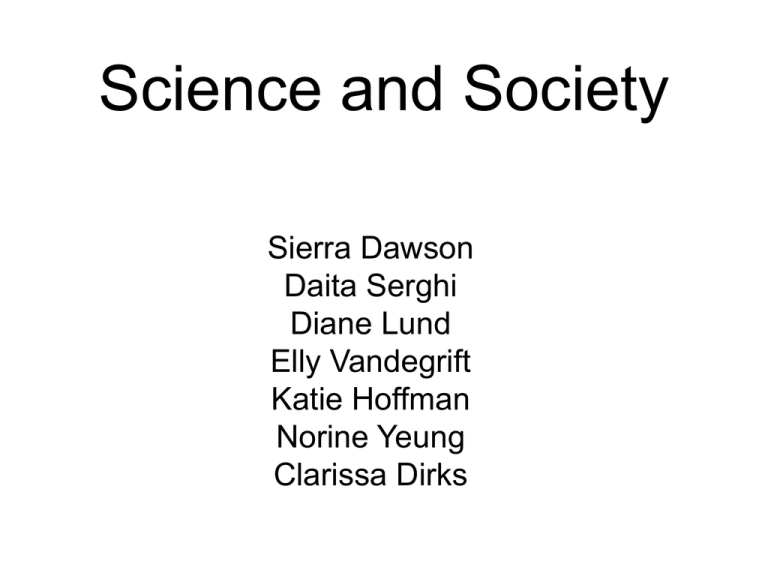
Science and Society
Sierra Dawson
Daita Serghi
Diane Lund
Elly Vandegrift
Katie Hoffman
Norine Yeung
Clarissa Dirks
Science and Society
SEX
Sierra Dawson
Daita Serghi
Diane Lund
Elly Vandegrift
Katie Hoffman
Norine Yeung
Clarissa Dirks
Goals
1. Understand, empathize and celebrate sexual and gender diversity.
2. Examine the ethics and philosophy related to sex, gender, and society.
3.Uncover common societal and cultural misconceptions about sex and gender
4. Students will know the genetics, anatomy and physiology of the sexual/reproductive system.
Course
SEX
and Society
Unit
1. Anatomy and
physiology
Learning
Outcomes
2. History of sex
3. Reproductive 4. Sex, Gender, and
pathology
Gender Identity
1. To be able to
distinguish between
sex and gender, and
know in which context
each term is
appropriate.
2. Compare and
contrast levels of
sexual determination
and orientation
including
chromosomal,
gonadal,
phenotypical,
psychological and
societal.
3. Critique popular
media and societal
misrepresentations
surrounding sex,
gender, and gender
identity and identify
bias.
5. Pregnancy,
Fertility,
and Lactation
6. Positive and
Negative
psychology
of sexual health
Goals
1. Understand, empathize and celebrate sexual and gender diversity.
3. Uncover common societal and cultural misconceptions about sex and gender
Course
Unit
SEX and Society
Goals
1. Understand, empathize and celebrate sexual and gender diversity.
3. Uncover common societal and cultural misconceptions about sex and gender
Course
Unit
SEX
and Society
4. Sex, Gender,
and
1. Gender
To be able toIdentity
distinguish
between sex and gender,
and know in which context
each term is appropriate.
2. Compare and contrast
levels of sexual
determination and
orientation including
chromosomal, gonadal,
phenotypical, psychological
and societal.
3. Critique popular media
and societal
misrepresentations
surrounding sex, gender,
and gender identity and
identify bias.
Goals
1. Understand, empathize and celebrate sexual and gender diversity.
3. Uncover common societal and cultural misconceptions about sex and gender
Course
Unit
SEX
and Society
4. Sex, Gender,
and
1. Gender
To be able toIdentity
distinguish
between sex and gender,
and know in which context
each term is appropriate.
2. Compare and contrast
levels of sexual
determination and
orientation including
chromosomal, gonadal,
phenotypical, psychological
and societal.
3. Critique popular media
and societal
misrepresentations
surrounding sex, gender,
and gender identity and
identify bias.
Summative
Assessmen
t
Goals
1. Understand, empathize and celebrate sexual and gender diversity.
3. Uncover common societal and cultural misconceptions about sex and gender
Course
Unit
SEX
and Society
4. Sex, Gender,
and
1. Gender
To be able toIdentity
distinguish
between sex and gender,
and know in which context
each term is appropriate.
2. Compare and contrast
levels of sexual
determination and
orientation including
chromosomal, gonadal,
phenotypical, psychological
and societal.
3. Critique popular media
and societal
misrepresentations
surrounding sex, gender,
and gender identity and
identify bias.
Summative
Assessmen
t
Take Home Exam
Critique
use of sex and
gender terms in written
word
Goals
1. Understand, empathize and celebrate sexual and gender diversity.
3. Uncover common societal and cultural misconceptions about sex and gender
Course
Unit
SEX
and Society
4. Sex, Gender,
and
1. Gender
To be able toIdentity
distinguish
between sex and gender,
and know in which context
each term is appropriate.
2. Compare and contrast
levels of sexual
determination and
orientation including
chromosomal, gonadal,
phenotypical, psychological
and societal.
3. Critique popular media
and societal
misrepresentations
surrounding sex, gender,
and gender identity and
identify bias.
Summative
Assessmen
t
Take Home Exam
Critique
use of sex and
gender terms in written
word
Case
study
(Olympic Runner)
Goals
1. Understand, empathize and celebrate sexual and gender diversity.
3. Uncover common societal and cultural misconceptions about sex and gender
Course
Unit
SEX
and Society
4. Sex, Gender,
and
1. Gender
To be able toIdentity
distinguish
between sex and gender,
and know in which context
each term is appropriate.
2. Compare and contrast
levels of sexual
determination and
orientation including
chromosomal, gonadal,
phenotypical, psychological
and societal.
3. Critique popular media
and societal
misrepresentations
surrounding sex, gender,
and gender identity and
identify bias.
Summative
Assessmen
t
Take Home Exam
Critique
use of sex and
gender terms in written
word
Case
study
(Olympic Runner)
Goals
1. Understand, empathize and celebrate sexual and gender diversity.
3. Uncover common societal and cultural misconceptions about sex and gender
Course
Unit
Formative
Assessmen
t
SEX
and Society
4. Sex, Gender,
and
1. Gender
To be able toIdentity
distinguish
between sex and gender,
and know in which context
each term is appropriate.
2. Compare and contrast
levels of sexual
determination and
orientation including
chromosomal, gonadal,
phenotypical, psychological
and societal.
3. Critique popular media
and societal
misrepresentations
surrounding sex, gender,
and gender identity and
identify bias.
Summative
Assessmen
t
Take Home Exam
Critique
use of sex and
gender terms in written
word
Case
study
(Olympic Runner)
Goals
1. Understand, empathize and celebrate sexual and gender diversity.
3. Uncover common societal and cultural misconceptions about sex and gender
Course
Unit
Formative
Assessmen
t
In class Clicker
“Article Title”
SEX
and Society
4. Sex, Gender,
and
1. Gender
To be able toIdentity
distinguish
between sex and gender,
and know in which context
each term is appropriate.
2. Compare and contrast
levels of sexual
determination and
orientation including
chromosomal, gonadal,
phenotypical, psychological
and societal.
3. Critique popular media
and societal
misrepresentations
surrounding sex, gender,
and gender identity and
identify bias.
Summative
Assessmen
t
Take Home Exam
Critique
use of sex and
gender terms in written
word
Case
study
(Olympic Runner)
Goals
1. Understand, empathize and celebrate sexual and gender diversity.
3. Uncover common societal and cultural misconceptions about sex and gender
Course
Unit
Formative
Assessmen
t
In class Clicker
“Article Title”
Group Activity:
Male vs. Female
with
Brainstorming &
Peer Critique
SEX
and Society
4. Sex, Gender,
and
1. Gender
To be able toIdentity
distinguish
between sex and gender,
and know in which context
each term is appropriate.
2. Compare and contrast
levels of sexual
determination and
orientation including
chromosomal, gonadal,
phenotypical, psychological
and societal.
3. Critique popular media
and societal
misrepresentations
surrounding sex, gender,
and gender identity and
identify bias.
Summative
Assessmen
t
Take Home Exam
Critique
use of sex and
gender terms in written
word
Case
study
(Olympic Runner)
Goals
1. Understand, empathize and celebrate sexual and gender diversity.
3. Uncover common societal and cultural misconceptions about sex and gender
Course
Unit
Formative
Assessmen
t
In class Clicker
“Article Title”
Group Activity:
Male vs. Female
with
Brainstorming &
Peer Critique
Case study
(Olympic Runner)
SEX
and Society
4. Sex, Gender,
and
1. Gender
To be able toIdentity
distinguish
between sex and gender,
and know in which context
each term is appropriate.
2. Compare and contrast
levels of sexual
determination and
orientation including
chromosomal, gonadal,
phenotypical, psychological
and societal.
3. Critique popular media
and societal
misrepresentations
surrounding sex, gender,
and gender identity and
identify bias.
Summative
Assessmen
t
Take Home Exam
Critique
use of sex and
gender terms in written
word
Case
study
(Olympic Runner)
Goals
1. Understand, empathize and celebrate sexual and gender diversity.
3. Uncover common societal and cultural misconceptions about sex and gender
Course
Unit
Formative
Assessmen
t
In class Clicker
“Article Title”
Group Activity:
Male vs. Female
with
Brainstorming &
Peer Critique
Case study
(Olympic Runner)
SEX
and Society
4. Sex, Gender,
and
1. Gender
To be able toIdentity
distinguish
between sex and gender,
and know in which context
each term is appropriate.
2. Compare and contrast
levels of sexual
determination and
orientation including
chromosomal, gonadal,
phenotypical, psychological
and societal.
3. Critique popular media
and societal
misrepresentations
surrounding sex, gender,
and gender identity and
identify bias.
Summative
Assessmen
t
Take Home Exam
Critique
use of sex and
gender terms in written
word
Case
study
(Olympic Runner)
Let’s get it
on....
SEX and Gender
Sex, Gender and Gender Identity Unit
Plan for today:
1. Distinguish between sex and gender and
apply each term appropriately.
2. Compare/contrast levels of sexual
determination.
3. Critique media and societal
misrepresentation of sex, gender, and gender
identity and identify bias.
You would have read...
and turned in your answers
to the following online preassessment questions:
1. What is the main
distinction between the
appropriate use of the terms
sex and gender?
2. Create 4 research topics,
with 2 appropriate examples
for each term (sex and
gender).
Group work
Anything goes....
What does it mean to be
male?
What does it mean to be
female?
Discussion
✓chromosomal
✓internal
organs
✓external
characteristics
✓psychological
✓societal
Clicker Question
In which title is the term gender used most
ambiguously?
Duration of breastfeeding and gender are associated with methylation of
A. the LEPTIN gene in very young children.
Obermann-Borst SA, Eilers PH, Tobi EW, de Jong FH, Slagboom PE, Heijmans BT, Steegers-Theunissen RP.
Pediatr Res. 2013 Jun 11. doi: 10.1038/pr.2013.95. [Epub ahead of print]
B.
Man and woman, boy and girl: Differentiation and dimorphism of gender
identity from conception to maturity.
Money, John; Ehrhardt, Anke A.
Oxford, England: Johns Hopkins U. Press. (1972). xiv 311 pp.
C.
D.
Relational Aggression, Gender, and Social-Psychological Adjustment
Nicki R. Crick*, Jennifer K. Grotpeter, Child Development
Volume 66, Issue 3, pages 710–722, June 1995
Gender and leadership style: A meta-analysis.
Eagly, Alice H.; Johnson, Blair T.
Psychological Bulletin, Vol 108(2), Sep 1990, 233-256.
Clicker Question
In which title is the term gender used most
ambiguously?
Duration of breastfeeding and gender are associated with methylation of
A. the LEPTIN gene in very young children.
Obermann-Borst SA, Eilers PH, Tobi EW, de Jong FH, Slagboom PE, Heijmans BT, Steegers-Theunissen RP.
Pediatr Res. 2013 Jun 11. doi: 10.1038/pr.2013.95. [Epub ahead of print]
B.
Man and woman, boy and girl: Differentiation and dimorphism of gender
identity from conception to maturity.
Money, John; Ehrhardt, Anke A.
Oxford, England: Johns Hopkins U. Press. (1972). xiv 311 pp.
C.
D.
Relational Aggression, Gender, and Social-Psychological Adjustment
Nicki R. Crick*, Jennifer K. Grotpeter, Child Development
Volume 66, Issue 3, pages 710–722, June 1995
Gender and leadership style: A meta-analysis.
Eagly, Alice H.; Johnson, Blair T.
Psychological Bulletin, Vol 108(2), Sep 1990, 233-256.
DISCUSS
1. What is the main distinction between the
appropriate use of the terms sex and
gender?
"Sex" includes structural and functional
characteristics determined by sex chromosomes.
"Gender" includes the behavioral, cultural, and
psychological traits typically associated with one
sex.
Torgrimson & Minson, (2005) Sex and Gender: what is the
difference. Journal of Applied Physiology. Issue 99. Pgs. 785-787
Group work
Now switch....
Circle SEX characteristics.
Star GENDER
characteristics.
Case Study: Olympic Athlete Disqualified
from Competition for Failing Sex Test How Might This Happen?
Case Study: Olympic Athlete Disqualified
from Competition for Failing Sex Test How Might This Happen?
THINK
PAIR
SHARE

